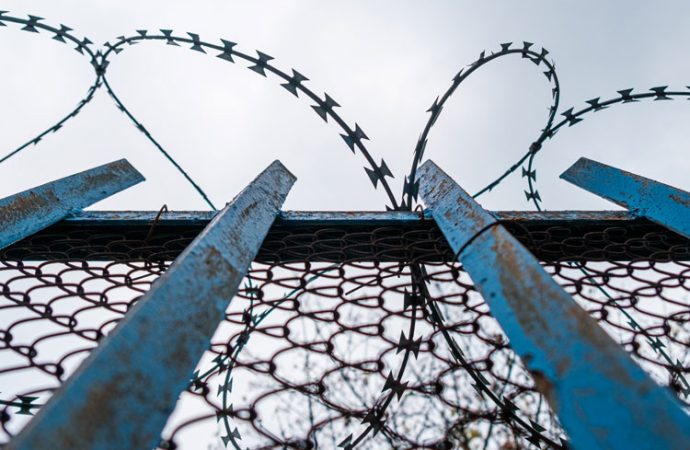Author Recent Posts Asfand Yar Khan Latest posts by Asfand Yar Khan (see all) Outcomes of the Shanghai Cooperation Organisation Heads of Government Summit – October 28, 2024 Deliberations and Outcomes of the 79th Session of the UNGA – October 11, 2024 SCO in Pakistan: Can it bring Normalcy in Indo Pak Relations? – September
Successive foreign invasions, political uncertainties, and economic chaos triggered one of the largest migration refugees from Afghanistan into Pakistan. Today, Afghan refugees are present in more than 70 countries all over the world, a vast majority of who are being hosted by neighbouring Pakistan and Iran. Despite being a non-signatory to the Geneva Convention of Refugees, Pakistan has been home to Afghan refugees which at one point numbered five million, thus making Pakistan the second largest refugee hosting nation. According to recent estimates, there are approximately 3 million Afghan refugees residing in Pakistan, of which around 1.4 million are Proof of Registration (PoR) cardholders, 0.84 million hold an Afghan Citizen Card (ACC), and the remaining 0.77 million are believed to be undocumented refugees. Due to the porous nature of Durand Line, the number of unregistered refugees inside Pakistan is believed to be much greater than the official figures.
Hosting of refugees has to be a collective problem for the world community. In the case of Afghan refugees, the responsibility was clearly not shared equitably. Invading powers, the US and erstwhile Soviet Union plunged Afghanistan in dark ages before they withdrew and almost forgot about the aftermath. Afghan people were left at the mercy of Pakistan and Iran, who opened doors to them despite having numerous internal politico economic difficulties. It is unfortunate that there is no end in sight to the Afghan refugee problem even after three decades. The most recent post withdrawal influx of Afghan refugees into Pakistan has had adverse impacts on Pakistan’s already dwindling economy. Property rents and crime rates in Pakistan’s metropolitan cities have skyrocketed; there are more shortages of food items such as wheat and sugar, and the consumption of the already limited stockpiles of gas and fuel have raised to unprecedented levels. All these economic woes can be directly and indirectly linked to the Afghan refugee crisis.
Despite a long history of refugee influx in Pakistan, authorities are yet to adopt a comprehensive approach to address the issue. Repatriation, relocation and absorption are the factors that should be focused on in policymaking. At the governmental level, Afghan refugees are still recognized as Temporarily Displaced People (TDPs) or Internally Displaced People (IDPs). Pakistan urgently requires legislation aiming at the repatriation of refugees at a domestic level to fill the legal void. Many undocumented refugees had started to enter the internal economy, mainly as low-income migrant households. There is need for the Government to formulate an effective policy to document these existing issues. Apart from awarding some medical, transit and substantial visas on humanitarian grounds, a strong policy would surely ensure the sustenance and repatriation of refugees. Under the UNHCR backed Voluntary Repatriation Programme, nearly 5.3 million Afghan refugees have repatriated back to Afghanistan since 2002. It is high time for the policymakers to seek international cooperation to devise such plans that enable voluntary repatriation.
It is evident that the refugee problem cannot be dealt by one country alone. It is a global issue that requires remedies at the global level. The United Nations is the most relevant international authority to resolve the issue under discussion. The Government of Pakistan unilaterally tried to repatriate Afghan refugees a few times in the last two decades particularly. First such attempt was made in 2005 when the Government decided to close down refugee camps and halted their food supplies. This plan proved fruitful for a short span of time until the resurgence of Afghan Taliban in 2007. More intense fighting between the US led coalition and Afghan resistance forces led to another round to refugee influx inside Pakistan. Much had to do with the unguarded Pak-Afghan border back then. Since there are no prospects of peace and economic stability in Afghanistan at the moment as no country has yet recognized the interim Afghan government, the chances of repatriation of Afghan refugees seem bleak for the foreseeable future.
Global powers in particular and the entire international community at large need to realize the importance of restoring normalcy in Afghanistan. Being a refugee is not a matter of choice but a necessity. An entire generation of Afghan refugees were born and raised inside refugee camps in Pakistan and Iran. These children have not seen any other country, but their host country. Until 2020, Afghan refugees were not allowed to have their own bank accounts. They still are not allowed to own businesses and properties, and they cannot even have their own driving licenses. Despite so many restrictions, it is surprising that Afghan refugees have owned businesses inside Pakistan worth billions of rupees. If repatriation does not seem possible for the foreseeable future, which it does, then the Government needs to formulate policies that could mainstream their labour and businesses inside Pakistan. Such moves could pave way for substantial tax collection and increased economic activities all over the Country.
- Outcomes of the Shanghai Cooperation Organisation Heads of Government Summit - October 28, 2024
- Deliberations and Outcomes of the 79th Session of the UNGA - October 11, 2024
- SCO in Pakistan: Can it bring Normalcy in Indo Pak Relations? - September 26, 2024












Leave a Comment
Your email address will not be published. Required fields are marked with *